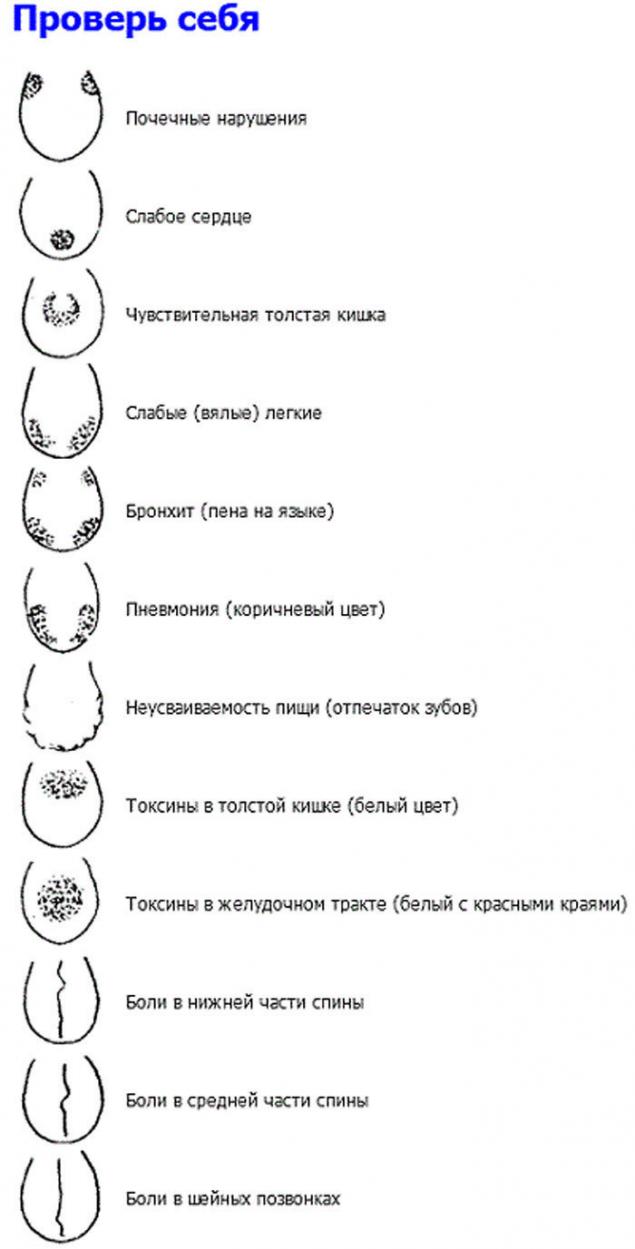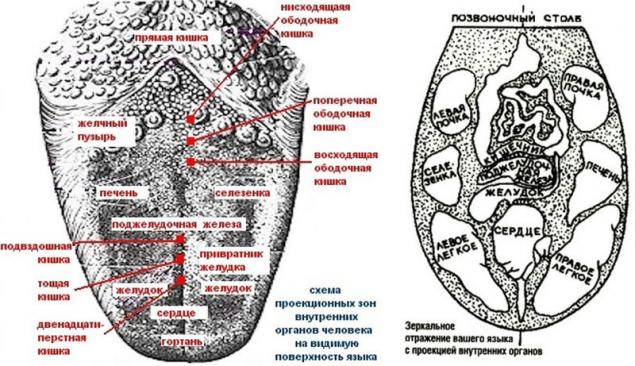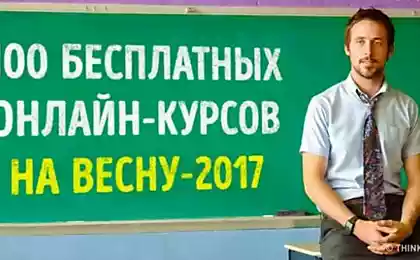608
Test yourself! Language will speak about the problems in the body
Did you know that the language is not only the organ of taste and speech, but true to print the internal state of our body? And in both European and Eastern medicine kind of language for diagnostic purposes has always attached great importance. Another well-known Russian doctor Nechaev wrote:"Fluted, with thick edges, is the language with simultaneous pathology of the spleen and liver, convex in abdominal dropsy, pointed — in case of tabes. In General the outlines of the language correspond to the outlines of the bones of the face". Before in medicine, inflammation of the gums and oral mucosa were considered separately from the General state of the organism, as a local process. However, currently science has established that the appearance of the tongue and oral mucosa as a whole, can help to identify the most various diseases. It turns out that only 10 percent of diseases of the mucosa caused by local factors, mainly injuries. The remaining 90 percent often point to diseases of the nervous system or internal organs. For example, in disorders of the stomach or irritation of the colon in the oral cavity there are ulcers, cholecystitis (inflammation of gallbladder) — extensive erosions of the buccal mucosa. No less important are the size, shape, color and General appearance of language. According to M. Nechaeva, bodily disorders can cause even the curvature of the tongue: when the disease of organs of a certain side of the body corresponding to the direction of language change in volume, and the tip of it is rejected. In our time, this symptom is considered, for example, neurologists at diagnosis "Central paralysis" (violation of the functioning of the hypoglossal nerve).

So, let us study. Better on an empty stomach. On the relevant parts of the language is projected onto all the internal organs and associated energy channels (see figure). Therefore, if any individual parts of the language did you notice, for example, discoloration or sensitivity, this indicates a disturbance in those organs that are associated with this part. At a distance of 3 cm from the tip of the tongue is the point of the heart on the left side of the tongue — left lung, right right lung. The root of the tongue is the intestines. Place the tongue on the left side associated with left kidney and the right side the right kidney. Projection of the liver is on the right side between the projection of the kidney and right lung.
Maximally stick out your tongue (but without excessive force as this may change the shape of the language and enhance the red hue) and look at him in the mirror. When the diagnosis of a language play a role not only the color and surface of language, but also its shape, edge and size. Test yourself
The color — indicator of health
The normal color of tongue is pink. Any deviations from this color can indicate the nuts or other diseases and pathologies. However, it also happens that the initial stage of the disease or chronic lung disease occurs even with normal color of the tongue.
Red tongue — may I suggest ischemia, high fever; severe pneumonia or infectious disease.
Dark red tongue indicates life-threatening form of pneumonia, infectious diseases, severe kidney disorders. Very pale - a sharp exhaustion, a symptom of anemia or shortage of blood in the body.
Yellowish - there is an excess of bile in the gallbladder or disorders in the liver.
Blue tongue - cardiovascular disorders, arrhythmia.
Language with a dark purple hue — angina; stagnation and clotting disorder; ischemic heart disease; congestive heart failure; cerebrovascular disease.
"Painted", with no plaque (the surface of the tongue is bright red, shiny, smooth because of atrophy of gustatory papillae) is found in cancer of stomach, chronic colitis, violations suction bowel function, as well as in pneumonia, convulsions.
If on the right side of the tongue visible bright red papillae, that often indicates a malfunction of the left lobe of the liver, their appearance on the left side — about the changes in the right lobe. Red papillae on the front of the tongue indicate dysfunction of the pelvic organs.
What will tell the RAID
The tongue coating is primarily associated with the stomach and digestive system and external pathogenic factors (i.e. colds, upper respiratory infections, flu, etc.). To diagnose matters of the distribution of plaque on the surface of the tongue: front, mid, rear, side, sides; unilateral or whether it is on two sides, on the tip or base of the tongue.
A normal tongue is covered with a thin whitish bloom, while to be the surface looks raw and pinkish. Thick plaque covering the tongue indicates toxins in the stomach, small intestine or large intestine. For example, if the bloom covered only the back of the tongue, there are toxins in the colon, and if the plaque in the middle of the tongue — the toxins present in the stomach and small intestine.
A thick white coating on the tongue in the first place indicates that the intestine is not in order. Possible severe indigestion, constipation, poisoning.
Plaque white color indicates disorders of the gastrointestinal tract.
Yellow plaque on the tongue often indicates the dysfunction of the gallbladder.
Coated tongue, with raids of various types and colors found in infectious diseases, and in diseases of the gastrointestinal tract.
Black patina , evidence of severe chronic disorders of the gall bladder, the pancreas, possibly with dehydration, acidosis (disturbance of acid-base balance).
Dry plaque - high body temperature, dehydration. Linguistic geography

In addition to plaque on the surface of language, there are also other signs by which one can learn about the problems in the internal organs.
For example, the so-called "geographic" tongue (when it shows you the different color and value areas) is found in mental disorders, and chronic disorders of the gastrointestinal tract, digestive disorders; cholecystitis and gastritis.
If the language is exposed to the root - cause of this can be ulcerative colitis, nephritis, cancer.
Language, exposed in the center indicates gastritis, shock, facial neuralgia.
Cracks at the edges of the tongue indicate the symptoms of diseases of the liver/gallbladder, as the sides of the tongue are mainly associated with these organs.
The bubbles on the tip of your tongue: since the tip of the tongue relates to the heart, lungs and pericardium, the disease should be sought in these organs. It can be sinusitis, bronchitis, pharyngitis, pneumonia; congestive heart failure and ischemic heart disease.
Varicose sublingual veins: this symptom indicates increased Central venous pressure or genetic predisposition to varicose veins, and hemorrhoids. Often noticeable with congestive heart failure associated with atrial fibrillation, valve damage, etc.
Trembling tongue - epilepsy, chorea, tremor, twitching.
The teeth marks in the side of the front of the tongue reveal the hidden neuroses, and the more neurosis, the sharper the prints. The imprint of the teeth on the edges of the tongue may indicate insufficient uptake of the bowel.
Look at the language — see the spine
Note the line in the middle of the tongue. If the line is curved, this can indicate deformation or the curvature of the spine.
The language is twisted or deflected to the side, found at the diseases of organs of a certain side of the body, as well as violations functions of the brain, e.g., stroke. Can be a symptom of multiple sclerosis, myasthenia gravis.
Language with deep transverse faults observed in brain disorders. The same changes in the language in healthy people may indicate a predisposition to vascular disorders of the brain.published Author: Marina Razumovsky
Source: www.alpha-omega.su/index/kandidoz_i_belyj_jazyk/0-428

So, let us study. Better on an empty stomach. On the relevant parts of the language is projected onto all the internal organs and associated energy channels (see figure). Therefore, if any individual parts of the language did you notice, for example, discoloration or sensitivity, this indicates a disturbance in those organs that are associated with this part. At a distance of 3 cm from the tip of the tongue is the point of the heart on the left side of the tongue — left lung, right right lung. The root of the tongue is the intestines. Place the tongue on the left side associated with left kidney and the right side the right kidney. Projection of the liver is on the right side between the projection of the kidney and right lung.
Maximally stick out your tongue (but without excessive force as this may change the shape of the language and enhance the red hue) and look at him in the mirror. When the diagnosis of a language play a role not only the color and surface of language, but also its shape, edge and size. Test yourself
The color — indicator of health
The normal color of tongue is pink. Any deviations from this color can indicate the nuts or other diseases and pathologies. However, it also happens that the initial stage of the disease or chronic lung disease occurs even with normal color of the tongue.
Red tongue — may I suggest ischemia, high fever; severe pneumonia or infectious disease.
Dark red tongue indicates life-threatening form of pneumonia, infectious diseases, severe kidney disorders. Very pale - a sharp exhaustion, a symptom of anemia or shortage of blood in the body.
Yellowish - there is an excess of bile in the gallbladder or disorders in the liver.
Blue tongue - cardiovascular disorders, arrhythmia.
Language with a dark purple hue — angina; stagnation and clotting disorder; ischemic heart disease; congestive heart failure; cerebrovascular disease.
"Painted", with no plaque (the surface of the tongue is bright red, shiny, smooth because of atrophy of gustatory papillae) is found in cancer of stomach, chronic colitis, violations suction bowel function, as well as in pneumonia, convulsions.
If on the right side of the tongue visible bright red papillae, that often indicates a malfunction of the left lobe of the liver, their appearance on the left side — about the changes in the right lobe. Red papillae on the front of the tongue indicate dysfunction of the pelvic organs.
What will tell the RAID
The tongue coating is primarily associated with the stomach and digestive system and external pathogenic factors (i.e. colds, upper respiratory infections, flu, etc.). To diagnose matters of the distribution of plaque on the surface of the tongue: front, mid, rear, side, sides; unilateral or whether it is on two sides, on the tip or base of the tongue.
A normal tongue is covered with a thin whitish bloom, while to be the surface looks raw and pinkish. Thick plaque covering the tongue indicates toxins in the stomach, small intestine or large intestine. For example, if the bloom covered only the back of the tongue, there are toxins in the colon, and if the plaque in the middle of the tongue — the toxins present in the stomach and small intestine.
A thick white coating on the tongue in the first place indicates that the intestine is not in order. Possible severe indigestion, constipation, poisoning.
Plaque white color indicates disorders of the gastrointestinal tract.
Yellow plaque on the tongue often indicates the dysfunction of the gallbladder.
Coated tongue, with raids of various types and colors found in infectious diseases, and in diseases of the gastrointestinal tract.
Black patina , evidence of severe chronic disorders of the gall bladder, the pancreas, possibly with dehydration, acidosis (disturbance of acid-base balance).
Dry plaque - high body temperature, dehydration. Linguistic geography

In addition to plaque on the surface of language, there are also other signs by which one can learn about the problems in the internal organs.
For example, the so-called "geographic" tongue (when it shows you the different color and value areas) is found in mental disorders, and chronic disorders of the gastrointestinal tract, digestive disorders; cholecystitis and gastritis.
If the language is exposed to the root - cause of this can be ulcerative colitis, nephritis, cancer.
Language, exposed in the center indicates gastritis, shock, facial neuralgia.
Cracks at the edges of the tongue indicate the symptoms of diseases of the liver/gallbladder, as the sides of the tongue are mainly associated with these organs.
The bubbles on the tip of your tongue: since the tip of the tongue relates to the heart, lungs and pericardium, the disease should be sought in these organs. It can be sinusitis, bronchitis, pharyngitis, pneumonia; congestive heart failure and ischemic heart disease.
Varicose sublingual veins: this symptom indicates increased Central venous pressure or genetic predisposition to varicose veins, and hemorrhoids. Often noticeable with congestive heart failure associated with atrial fibrillation, valve damage, etc.
Trembling tongue - epilepsy, chorea, tremor, twitching.
The teeth marks in the side of the front of the tongue reveal the hidden neuroses, and the more neurosis, the sharper the prints. The imprint of the teeth on the edges of the tongue may indicate insufficient uptake of the bowel.
Look at the language — see the spine
Note the line in the middle of the tongue. If the line is curved, this can indicate deformation or the curvature of the spine.
The language is twisted or deflected to the side, found at the diseases of organs of a certain side of the body, as well as violations functions of the brain, e.g., stroke. Can be a symptom of multiple sclerosis, myasthenia gravis.
Language with deep transverse faults observed in brain disorders. The same changes in the language in healthy people may indicate a predisposition to vascular disorders of the brain.published Author: Marina Razumovsky
Source: www.alpha-omega.su/index/kandidoz_i_belyj_jazyk/0-428
Named contenders for the title of best "green" car of the year
Liz Burbo: People cannot recover without FORGIVING yourself























